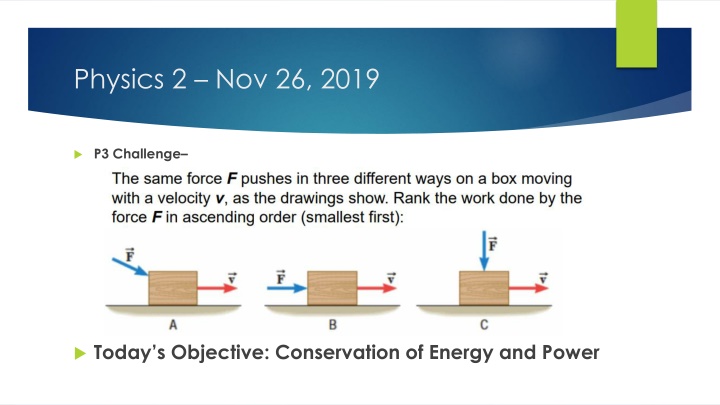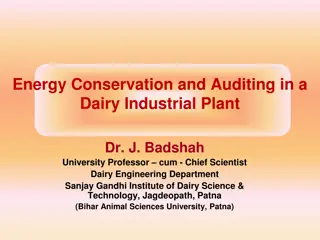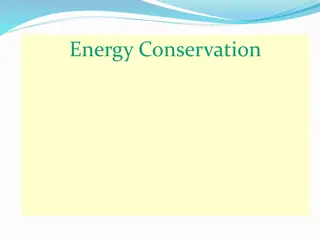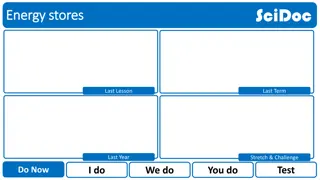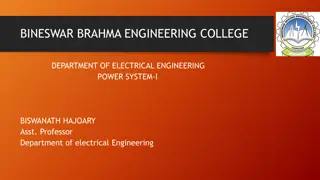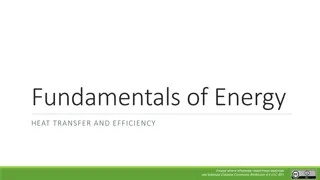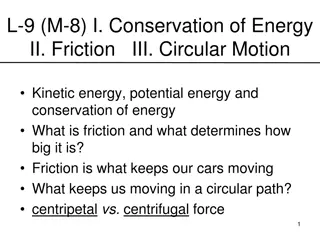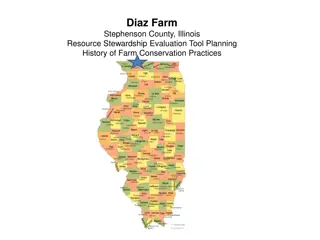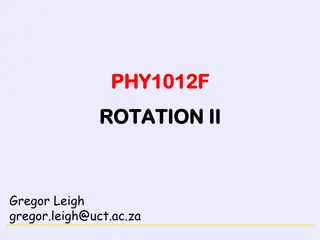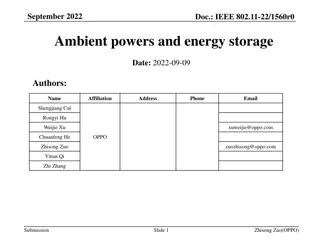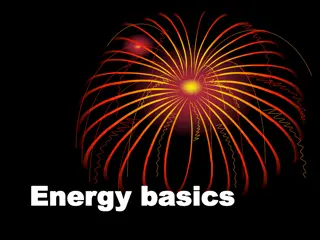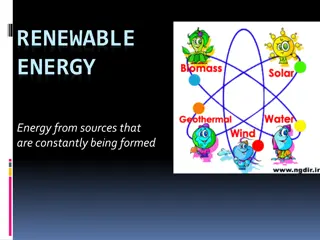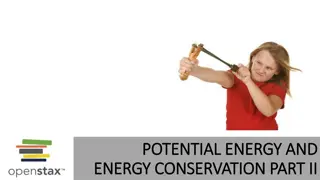Conservation of Energy and Power
Types of systems in physics, understand the concept of conservation of energy, and learn about conservative forces and gravitational potential energy. Dive into the principles governing work, energy, and power.
Download Presentation

Please find below an Image/Link to download the presentation.
The content on the website is provided AS IS for your information and personal use only. It may not be sold, licensed, or shared on other websites without obtaining consent from the author.If you encounter any issues during the download, it is possible that the publisher has removed the file from their server.
You are allowed to download the files provided on this website for personal or commercial use, subject to the condition that they are used lawfully. All files are the property of their respective owners.
The content on the website is provided AS IS for your information and personal use only. It may not be sold, licensed, or shared on other websites without obtaining consent from the author.
E N D
Presentation Transcript
Physics 2 Nov 26, 2019 P3 Challenge Today s Objective: Conservation of Energy and Power
Agenda, Assignment IB 2.3 Work, Energy and Power Agenda Types of Systems Conservation of Energy More about Energy, Heat and Work Power Assignment: Conservative Forces Conservation of Energy Conservation of Energy Worksheet Power Efficiency
Types of Systems Depending on how you draw the boundary of your system, there are three types of systems that can occur: Open, Closed and Isolated. An open system allows both matter and energy (in the form of work and/or heat) to flow over the border of the system. A closed system prohibits matter exchange over the border, but still allows a change in energy (heat and/or work) An isolated system prohibits both matter and energy exchange over the border of the system.
Change in energy for a system Positive work on the system, Win Adds to the energy of a system. Negative work on the system, Wout Removes energy from a system Positive Heat, Qin Adds to the energy of a system. Negative Heat, Qout Overall: ? = ? + ? Removes energy from a system
Conservation of Energy If you can identify an isolated system, then the E for the system will be zero. The result is a conservation of energy between any two states of the system over time. Many physical situations fall under this category. The notable exception is when there is an external force doing work on the system, usually in the form of friction. Note: This is a conservation of energy for a given system. Contrast this to the general idea of conservation of energy in the universe.
Conservative Forces A closed loop sequence is any series of events that returns a system to the same conditions present at the beginning of the loop. If a force does no net work during any closed loop sequence of events, then the force is conservative. If work is done, the force is nonconservative. Consider a swinging pendulum. The work done by gravity over a complete swing is zero. It has positive work as the pendulum falls, but does an equal amount of negative work as the pendulum rises again. Therefore, gravity is a conservative force.
Gravitational Potential E For every conservative force, there is a corresponding potential energy, U, defined as the opposite of the work done by the conservative force. For the work done by gravity Ug= Wg (Note IB uses the general symbol Epfor all potential energies) Ug= mgh
Spring Force Consider a mass oscillating on a spring on a horizontal frictionless table. For one complete cycle, the spring does zero work. As the mass is being compressed, the spring does negative work. As it moves back to equilibrium it does an equal amount of positive work. As is becomes extended, the spring again does negative work until it turns around. As the mass returns to equilibrium an equal amount of positive work is done. Therefore, the spring force is a conservative force.
Spring Potential Energy Because the spring force is conservative, there is a Spring Potential Energy that is equal to the opposite of the work done by the conservative force. Us= Ws (Note IB uses the general symbol Epfor all potential energies) Us = kx2
Problem Solving with Cons of Energy As long as only conservative forces are present, then the total amount of energy in an isolated system will be constant. Problem solving strategy is to inventory the types of energy present at time 1 and set their sum equal to the inventory of types of energy present at time 2. There are three types of energy to consider: K = mv2Ug= mgh and Us= kx2 The types of problems one can solve this way are similar to problems we previously solved with kinematics. Hint: Choose a convenient point to set Ep= 0 to make life easy. (Ex: Ug= 0 at bottom of hill.)
Problem Solving with Cons of Energy Ex: A 55 kg sled starting at rest slides down a virtually frictionless hill. How fast will the sled be moving when it reaches the field 1.2 m below? Ex: What if the sled had an initial speed of 1.5 m/s?
When there is friction. Friction is a nonconservative force that does negative work on a system. The change in energy of the system E = W is equal to the work done by friction. Or Ek1+ EP1+ Wnc= EK2+ EP2 Wncis the work done by all nonconservative forces. (Friction is just the most common one.) Think about a money analogy.
When there is friction. Ex: A 62.9-kg downhill skier is moving with a speed of 12.9 m/s as he starts his descent from a level plateau at 123-m height to the ground below. The slope has an angle of 14.1 degrees and a coefficient of friction of 0.121. The skier coasts the entire descent without using his poles; upon reaching the bottom he continues to coast to a stop; the coefficient of friction along the level surface is 0.623. How far will he coast along the level area at the bottom of the slope? (Use energy methods)
Power Power is defined as the rate at which work is done. In mathematics this is a time derivative or ? = ? ? Power is measured in Watts, (W) with 1 W = 1 J/s An alternative formula for power is easily derived if one considers Work as a force times a change in displacement. Change in displacement over change in time we know as velocity. So ? = ? ? ?= ? ? ? = ? ? = ????? ?
Power problems Ex: Running late to class, Jerome runs up the stairs, elevating his 102 kg body a vertical distance of 2.29 meters in a time of 1.32 seconds at a constant speed. What power did Jerome generate? Ex: At what velocity is a car moving at the instant its engine is using 2,250 watts to exert 130 N of force on the car s wheels?
Efficiency A related idea to the power of a motor is its efficiency. In the real world, all motors that provide power that can do work, run at less than 100% efficiency. There is always some loss to nonconservative forces. ?????????? =?????? ?????? ??? ?????? ?????? ??=?????? ????? ??? ?????? ????? ??
Efficiency Ex: A certain motor uses 1300J of energy to raise a 30kg mass to a height 2.4 meters above where it started. a. How much potential energy does the mass gain during the lift? b. Calculate the efficiency of this motor.
Exit Slip - Assignment Exit Slip- What conditions must be met to apply conservation of energy problem solving strategies for a system? What s Due? (Pending assignments to complete.) Conservation of Energy Worksheet, p1-2 only. What s Next? (How to prepare for the next day) Read 2.3 p78-95 about Work and Energy
